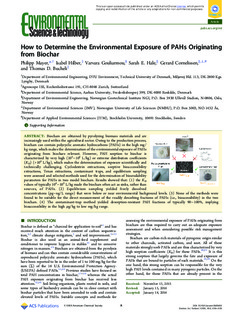How to determine the environmental exposure of PAHs originating from biochar
Mayer, Philipp; Hilber, Isabel; Gouliarmou, Varvara; Hale, Sarah; Cornelissen, Gerard; Bucheli, Thomas D
Journal article, Peer reviewed
Permanent lenke
http://hdl.handle.net/11250/2385783Utgivelsesdato
2016Metadata
Vis full innførselSamlinger
Sammendrag
Biochars are obtained by pyrolysing biomass materials and are increasingly used within the agricultural sector. Owing to the production process, biochars can contain polycyclic aromatic hydrocarbons (PAHs) in the high mg/kg range, which makes the determination of the environmental exposure of PAHs originating from biochars relevant. However, PAH sorption to biochar is characterized by very high (104-106 L/kg) or extreme distribution coefficients (KD) (>106 L/kg), which makes the determination of exposure scientifically and technically challenging. Cyclodextrin Extractions, Sorptive Bioaccessibility Extractions, Tenax Extractions, Contaminant Traps and Equilibrium Sampling were assessed and selected methods used for the determination of bioavailability parameters for PAHs in two model biochars. Results showed: (1) Distribution coefficients of typically 106-109 L/kg made the biochars often act as sinks, rather than sources, of PAHs. (2) Equilibrium Sampling yielded freely dissolved concentrations (pg-ng/L range) that were below or near environmental background levels. (3) None of the methods were found to be suitable for the direct measurement of the readily desorbing fractions of PAHs (i.e. bioacessibility) in the two biochars. (4) The Contaminant Trap method yielded desorption resistant PAH fractions of typically 90-100%, implying bioaccessibility in the high µg/kg to low mg/kg range.
Beskrivelse
-
